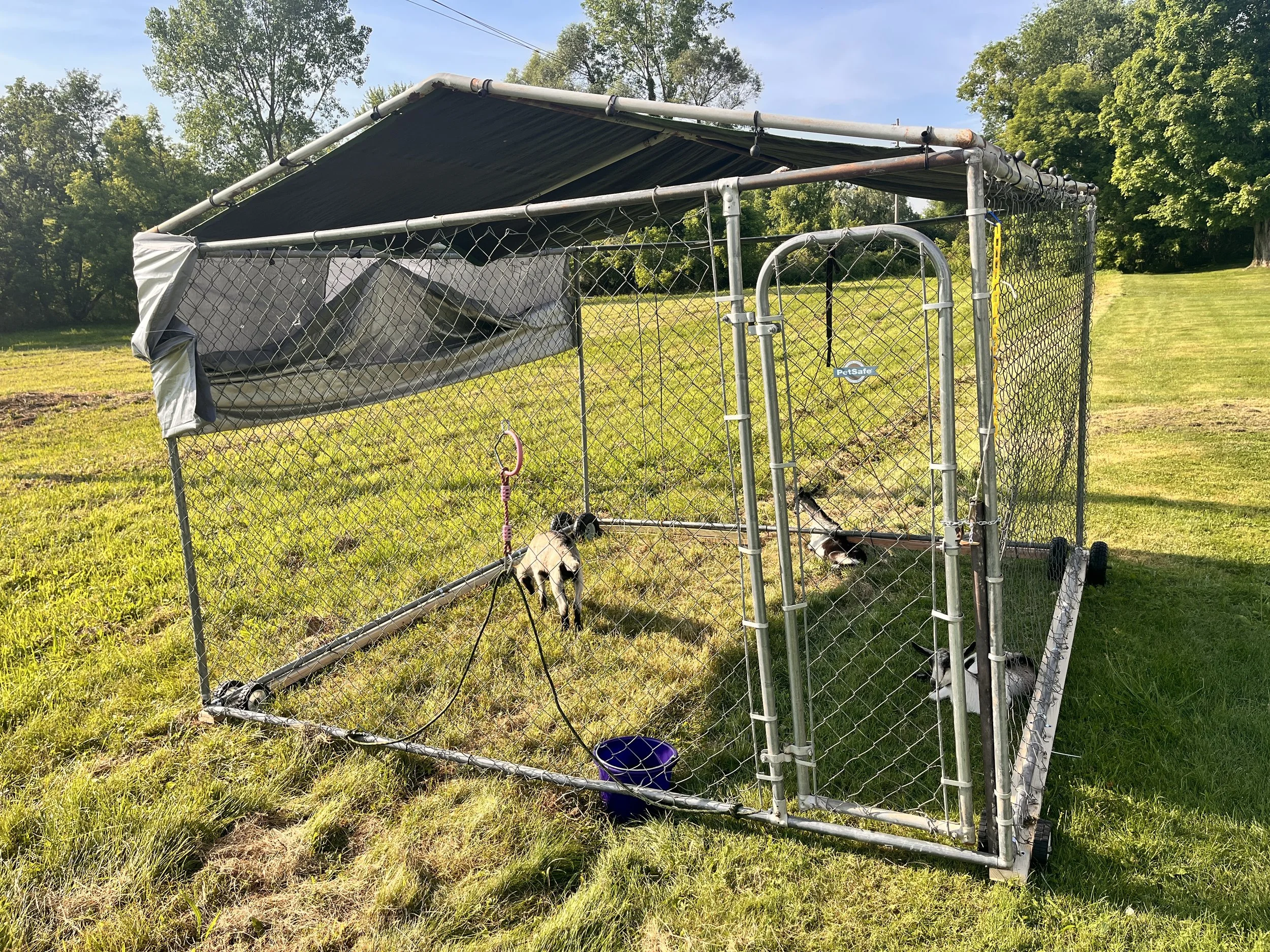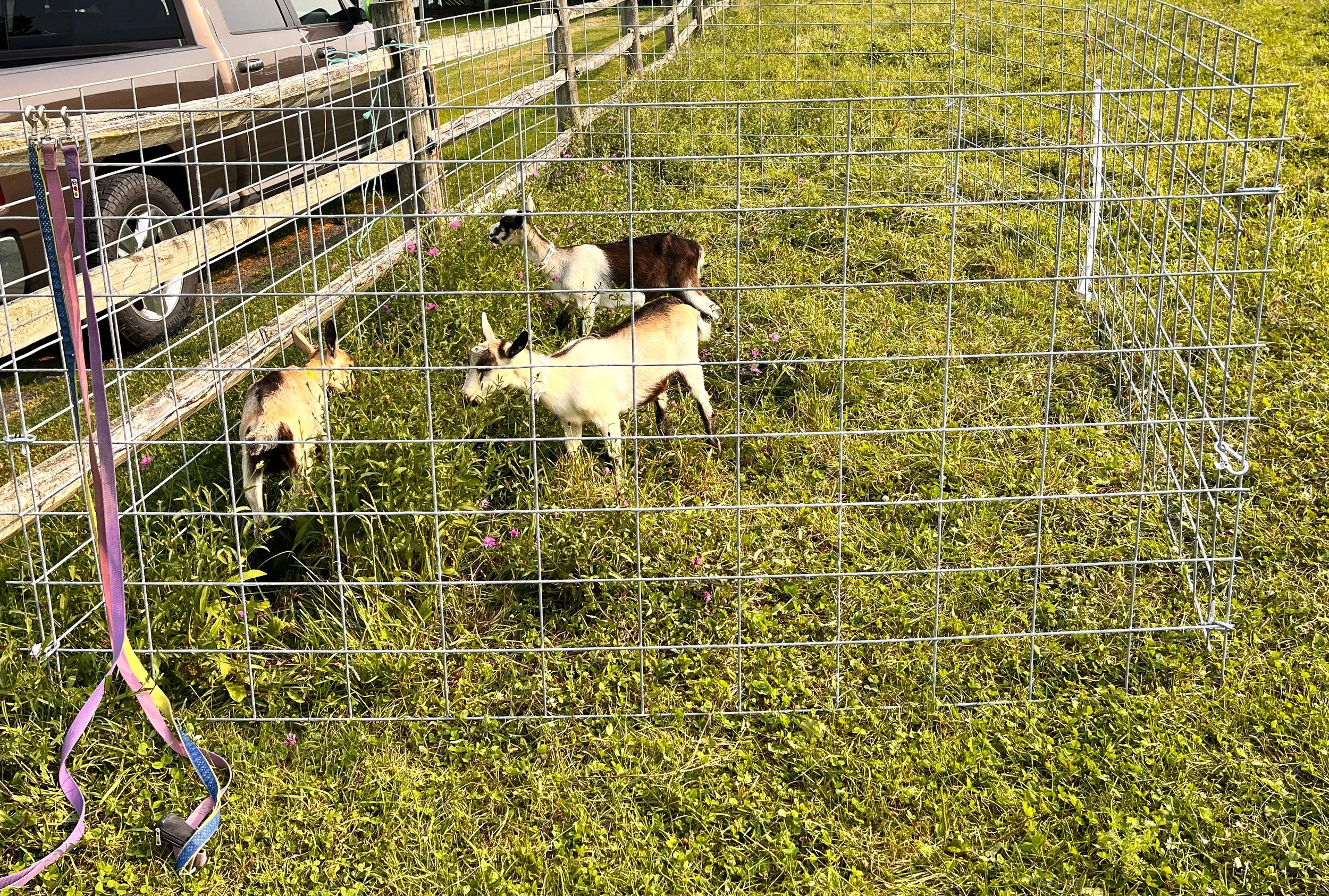The Goat Tractor
by Troy Bishopp
Small ruminants are often the starter animals for many families getting into agriculture.
According to numerous trends---pastured poultry, sheep, goats and piglet sales are as popular as ever ushering novices into homegrown food production. In this space, there are countless examples, via books or YouTube videos, of chicken tractors, movable pig and rabbit pens and portable fencing setups that allow animals to forage every margin on a property from postage stamp yards to fields.
My granddaughters, Hadley and Emerson, have jumped on this trend for burgeoning agriculturists by using a “photosynthesis facilitating” movable, goat tractor.
This idea was born out of a few concerns when you have youngsters around. We (Dad Travis, and Pop Pop) needed to come up with an easier way for small children, to manage a few baby goats by themselves. Electric fence, labor ease, forage allocation, shelter, security, portability and the behavior of goats were all in play to manage around.
Some would say, and have said, “Just tether them to a post or cement block and they’ll be fine.” I can only imagine explaining to my granddaughters, how her kids got shredded by a neighborhood dog or choked to death from wrapping around a post. I’d rather quit right now!
The magical answer to our queries was, wait for it--------an old dog pen and/or movable cattle panel pens.
Sorry it’s not a more exciting idea but when an opportunity presents itself you make it work. And as an entrepreneurial-minded, seasoned farmer, you share what works so others can prosper in an agricultural venture. The now, dog-goat tractor was purchased locally from a friend for 50 bucks, cause it outlived the dog.
The beauty of this 10’x10’ self-contained, non-electric gem was it was chain link, lightweight, had a door and a tarped roof. Travis installed wheels and pull cords for easy moves around the “pasture lawn”. When I did my 5 kid (3 does and 2 kids) grazing plan, the pasture allocation of 100 square feet of 10 inch grass, moved twice daily, fed the animals and microbes well. You could also measure your area and see in 40 days that you could start your mini grazing rotation over again.
The “tractor” works really well. Problem is “kids” grow up and become more rambunctious and test the boundaries of construction and latches, so you have to continually monitor their escape potential, because they always want the next greener bite.
When the goatees, come over to Nonna and Pop Pop’s farm, they are kept in a cattle panel setup scooted along the ground daily and are the fence-line cleanup crew munching on knapweed flowers, grasses and any other forb that excites their palate, that the cattle turned their nose up to. They are invaluable teachers about animal behavior, foraging preferences and drop fertility tablets wherever they go. They’re a heck of a lot more fun than Glyphosate.
Like many things, follow a recipe that works for your situation that keeps all the “kids” safe and happily learning. All in all, the goat tractor is a great success. It’s teaching youngsters about animal husbandry, raising healthy “kids” and in the future will provide a family with homegrown, nutritious dairy products. It also reminds us of how resilient we can be if we try to look at the world as an opportunity not a challenge.
“Happiness is making the most of what you have and riches are making the most of what you got.” ~ Rosamunde Pilcher
If you are interested in learning more about the economic impacts, multispecies grazing benefits or small ruminants in general, join us for “Graze-on Over” on September 3rd at 7 pm Eastern time. Click here to learn more and register.



